Yueyang, Changsha Four-day Tour

After checking the local health code after exiting the station, I had to take my unchecked luggage with me. Take a taxi directly to Yueyang Tower Scenic Area, have lunch at Bianhe Street at the entrance of the scenic area, and try the yellow croaker tofu soup and water cabbage from Dongting Lake.

After eating, walk along Bianhe Street to the door of Yueyang Tower. Bianhe Street is located in front of the main building of Yueyang Tower. You can look out on the railing and overlook the Yangtze River. The scattered Qingshitai roads and the melodious Guqin music add a bit of charm to this antique street.
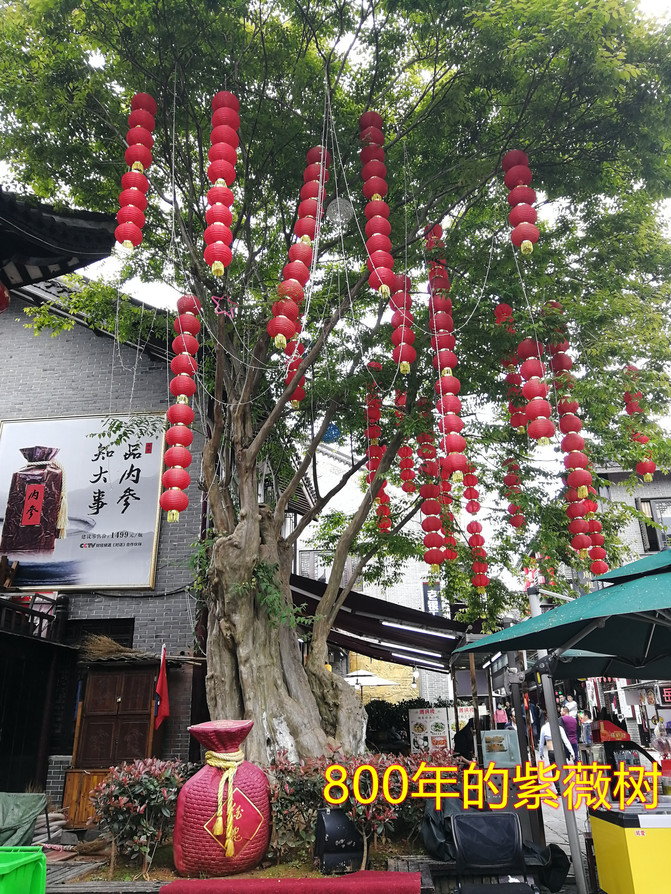



Yueyang Tower Scenic Area is composed of Wuchao Tower Temple, Shuanggong Temple, Xinstele Corridor, Yueyang Tower, Sanzui Pavilion, Meixian Pavilion, Xiaoqiao Tomb, Tiejiao Pavilion, Huaifu Pavilion, etc. The south gate is under construction, so I have to enter inside and have a picture. Oh

Entering the scenic spot, what is presented in front of you is the Five Dynasties Tower View (in the form of miniature bronze casting, five Yueyang towers with different styles in the Tang, Song, Yuan, Ming and Qing dynasties are reproduced. These models are all based on ancient chronicles and the Yueyang Tower drawn by painters of past dynasties are carefully crafted with brass drawings).


Shuanggong Temple-It was built in memory of Fan Zhongyan and Teng Zijing, two sages, and adopts the architectural style of the Ming and Qing ancestral halls in northern Hunan.




Stele Corridor--The stele corridor is located on the east side of Yueyang Tower. It is nearly 100 meters long, with red pillars and edge tiles, flying cabinets and flowing pills, and high-pecked eaves. It is simple, elegant and beautiful.

Yueyang Tower, the first of the three famous buildings in Jiangnan, is also known as the three famous buildings in Jiangnan, along with Tengwang Pavilion in Nanchang, Jiangxi, and Yellow Crane Tower in Wuhan, Hubei.
Located at the west gate of the ancient city of Baling, close to the shores of Dongting Lake, it was built in 214 AD and has a history of more than 1800 years. It was formerly the "Yuejun Building" built by Lu Su, a general of the Eastern Wu Dynasty; since ancient times, it has enjoyed the reputation of "Dongting World Water, Yueyang World Building". Unfortunately, it was under repair when I went there.









Dianjiangtai Ruins-the site where Wu General Lu Su led a million troops to guard Baling in 214 AD and train the navy.


The back door of Yueyang Tower is connected to the lake water

Huaifu Pavilion-It was built in 1962 by Yueyang people in memory of Du Fu, a poet of the Tang Dynasty.

Xiao Qiao's tomb-Xiao Qiao is the wife of Zhou Yu, a famous general of Wu, and her beauty is so beautiful that she can overthrow the city and country.


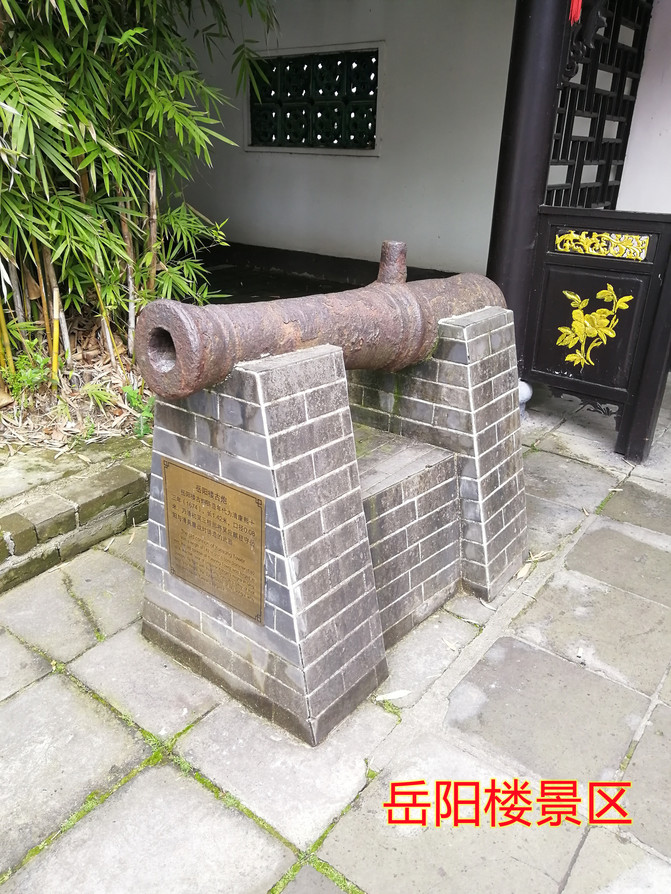
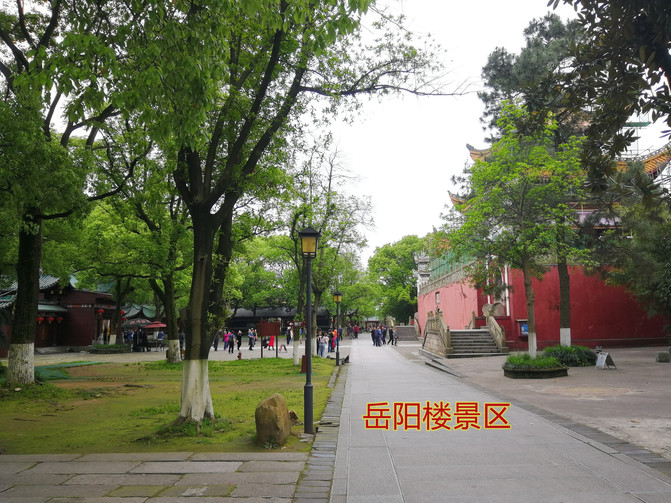

Baling Square
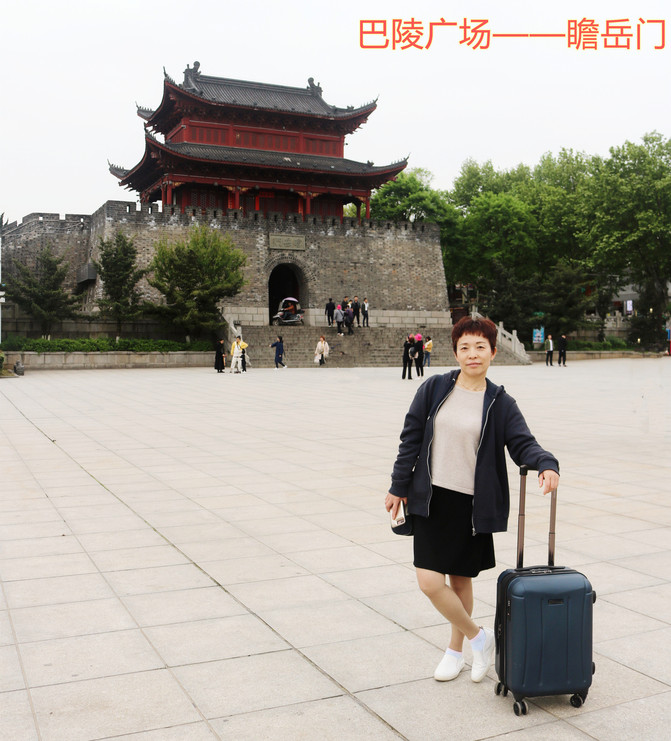


Three Famous Buildings in Jiangnan
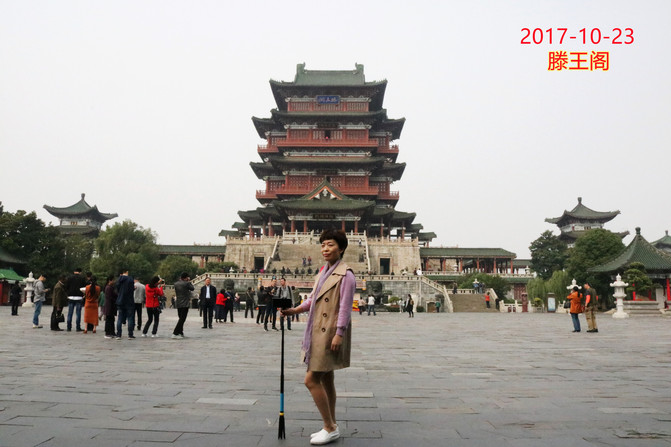

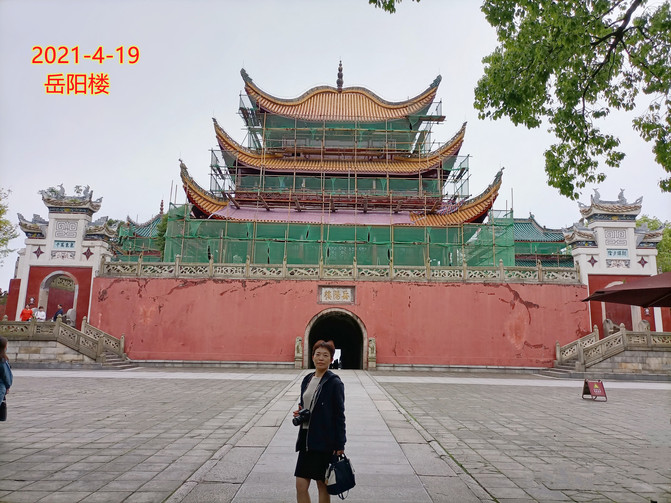
17;51 PM G695 Yueyang East to Changsha South 18;25 PM Arrive from, take the subway and check into Licheng Ruixuan Changsha Nanmenkou Pedestrian Street Hotel


Put down your luggage and stroll around the Huangxing Road Pedestrian Street at the door




4-20 Itinerary: Yuelu Academy, Juzizhou Transportation: Subway
Get off the Hunan University subway station and walk forward by the Inferiority Pavilion-the pavilion is named after "If you climb a mountain, you will be Inferiority". This pavilion was built in the 17th year of Jiaqing of the Qing Dynasty (1812) and is one of the most scenic spots in Yuelu.
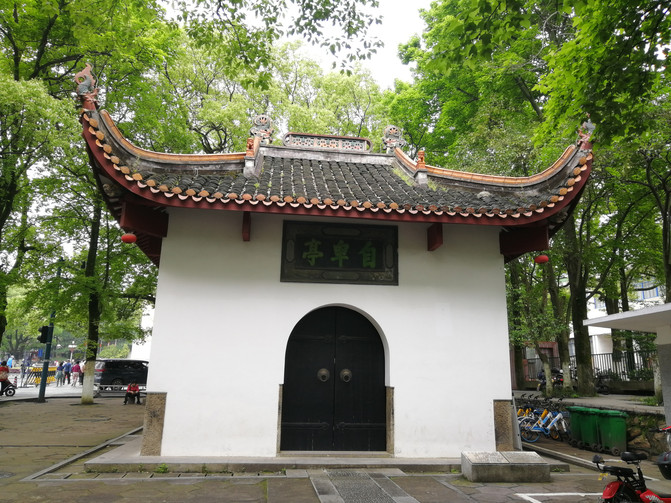
Across the road is the campus of Hunan University

Yuelu Academy was founded in 976 AD. In 1950, Mao Zedong personally inscribed the name of the school-Hunan University.



Yuelu Academy-Yuelu Academy is one of the four famous academies in Chinese history and one of the oldest universities in the world. It was founded in the ninth year of Kaibao in the Northern Song Dynasty (976 AD). Its ancient traditional academy buildings are still intact. Preserved. The ancient building complex of Yuelu Academy is divided into five major architectural patterns: teaching, book collection, sacrifice, garden and memorial. The main buildings are Qianmen, Hexi Terrace, Gate (Main Gate), Second Gate, Lecture Hall, and Imperial Book Tower from south to north, concentrated on the central axis. The lecture hall is arranged in the center of the central axis, with fasting houses, sacrificial temples, etc. arranged on both sides.
Guide map of Yuelu Academy (distribution of buildings and attractions)

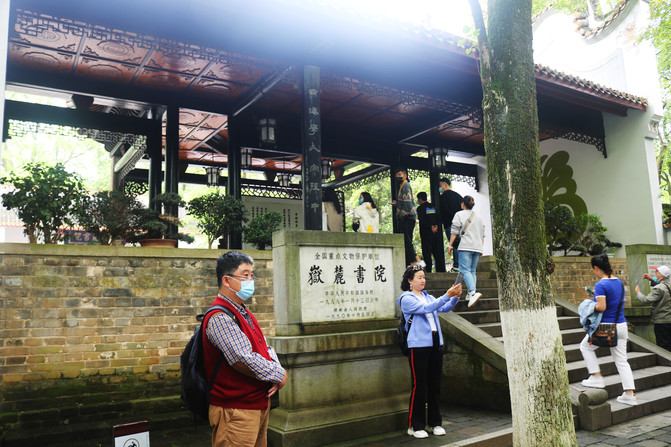
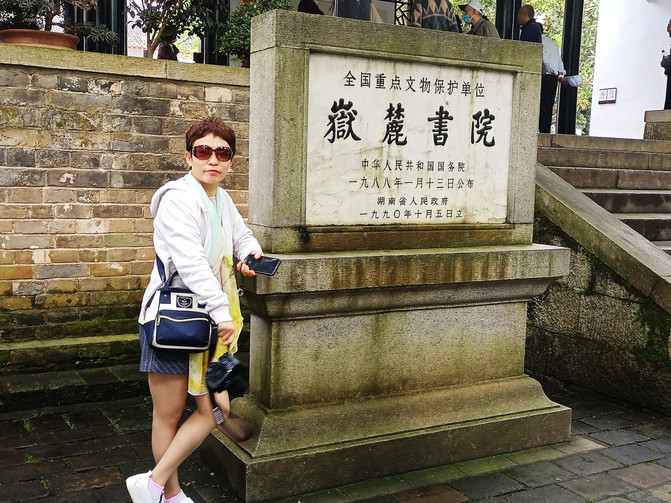
When you enter the academy, you can find the figure of Hexi Terrace far away. It was built in the seventh year of Jiajing in the Ming Dynasty. It is located in front of the Yuelu Academy. It was built to commemorate Zhang Xi and Zhu Xi watched the sunrise and study for the beautiful time. There are two words "Fu" and "Shou" on the left and right walls of the stage, each 1.3 meters high. There is a beautiful legend.

It is said that in 1807 (the twelfth year of Jiaqing), when Luo Dian went to the Lu Ming banquet again, a Taoist priest came to the courtyard and said that he was good at writing and could poetry. Seeing that he was a Taoist priest, he was not formally received. Unexpectedly, the Taoist priest picked up a broom, dipped it in yellow mud and water, and waved it into the word "Shou" on the right wall, and left without saying goodbye. The characters are like dragons and snakes winding around, strong and powerful, and are known as "immortal traces." Later, striving to be symmetrical between the two walls, Luo Dian added the word "Fu" on the left wall.

There is a double-sided screen in the Hexi Terrace. One side is painted with a plan of the restored Yuelu Academy, and the other side contains poems written by Zhu Xi, Zhang Wei, Wang Shouren and Mao Zedong



The main gate (main entrance) was built in the Ming Dynasty. The "Yuelu Academy" on the forehead of the main gate was personally inscribed by Emperor Zhenzong of the Song Dynasty. The original version was destroyed during the Anti-Japanese War and was reproduced in 1984 based on historical photos.

The stone drums on both sides of the Yuelu Academy gate are stone carvings of white marble


Entering the main entrance, you will see the second door of Yuelu Academy

After walking through two doors, you will reach the core area of Yuelu Academy-the lecture hall
The lecture hall, also known as the 'Jingtang "or the" Loyalty, Filial Piety, Integrity, and Integrity "Hall, is a key place for teaching in the academy and a place for holding major activities.
There are three plaques in the lecture hall: the school motto "Seeking Truth from Facts", the imperial gift of Emperor Kangxi "Learning to Achieve Nature", and the imperial gift of Emperor Qianlong ".

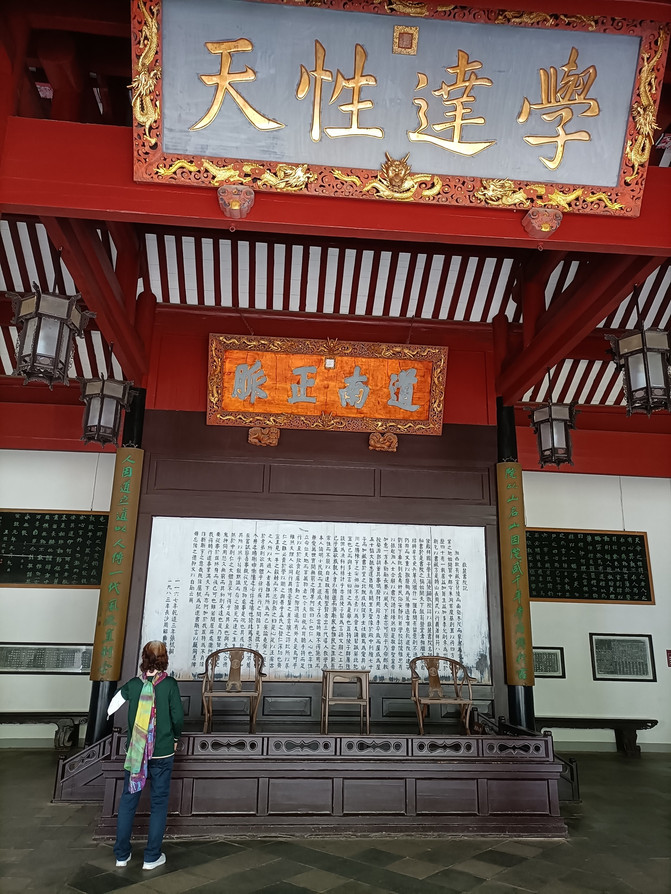

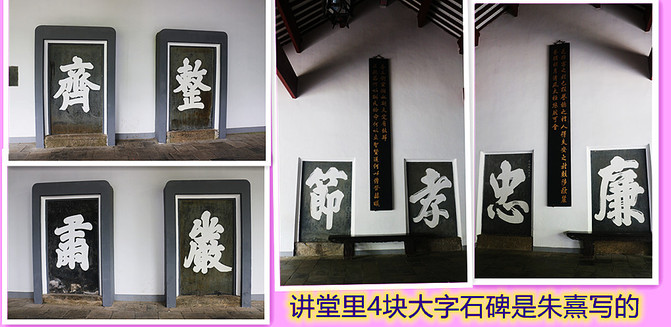
Royal Book Tower-Built in the second year of Xianping in the Northern Song Dynasty (999), it also has a history of more than 1000 years. It is one of the oldest book towers today.
It is a three-story pavilion building in the Song Dynasty style. It is antique and is the best place for reading and research because of its quiet environment. Among them, scholars from the Song, Yuan, Ming and Qing Dynasties have the largest number of books and collections, with more than 100,000 volumes and are not open to the public.


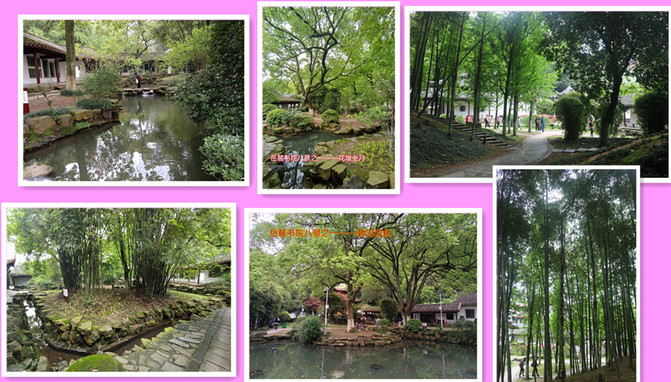

, was built in 1796 during the Jiaqing period of the Qing Dynasty to commemorate Qu Yuan, the great patriotic poet of the Warring States Period.

Teaching Zhai-a place where students studied and teachers taught in ancient times.

The Confucian Temple is located on the left side of the academy. It consists of Zhaobi, Gate Tower, Dacheng Gate, Dacheng Hall, Liangwu, Chongsheng Temple, Minglun Hall and other buildings. Although it has been destroyed and renovated repeatedly, its architectural pattern remains unchanged. It is the largest academy Confucian Temple in the country and has the highest architectural specifications. It is of royal architectural grade, which is unique among academies in the country.
Zhaobi is a building in the Ming and Qing Dynasties


pailou

Dacheng Gate was built in the seventh year of Tongzhi of the Qing Dynasty (1868)

Dacheng Hall-is the most important building in the Confucian Temple. It has double eaves and a mountain top, yellow glazed tiles, caiseling ceilings, and carved dragons and phoenixes.



Chongsheng Temple--A place where Confucius 'ancestors were sacrificed to the five generations

Sizhen Pavilion-is a place dedicated to worshiping Cheng Hao (1032-1082) and Cheng Yi (1033-1107). Cheng Hao and Cheng Yi were both educators and founders of Neo-Confucianism in the Northern Song Dynasty. They studied from Zhou Dunyi and are known as the "Ercheng" in the world.


Chinese Academy Museum-This is the first state-owned museum in China focusing on the history of Chinese academies and the history of culture and education. There are five exhibition halls, which respectively display the thousand-year development history of ancient Chinese colleges and the academy teaching exhibition halls displaying school supplies and teaching methods.


After visiting Yuelu Academy, take the subway to Juzizhou
Juzizhou-is the largest sandbank among the many alluvial sandbanks in the lower reaches of the Xiangjiang River and is known as "China's first continent".
If you have good physical strength, you can take a walk and take a look, otherwise it is recommended to take a small battery car.


Mei Foo Yanghang Former Site













There are still many tourists on the streets in Changsha at night. Follow Huangxing South Road to the Huo Palace
Scenery of Huangxing South Road

There is a long queue of tourists at every Chayan Yuese store in the Pedestrian Street. Probably like me, you must taste this Internet celebrity tea drink when you come to Changsha.

Huo Palace-Built before the fifth year of Wanli in the Ming Dynasty (1577), it has a history of more than 400 years. It is a representative public place that integrates traditional folk culture, fire temple culture, and food culture.












4-21 Hunan Museum, Tianxin Pavilion
Hunan Province Museum-Founded in the 23rd year of Guangxu of the Qing Dynasty (1897), it is one of the first batch of national-level first-class museums in China and one of the eight national-level key museums jointly built by the central and local governments. Cultural relics unearthed from the famous "Mawangdui Han Tomb". Arrive by subway after breakfast in the morning, and then walk for 20 minutes. After making an online appointment, scanning the code, and security check in, you can go directly to the "Cultural Relics Unearthed from the Han Tomb of Mawangdui" exhibition hall on the third floor.

The Mawangdui Han Tomb is the tomb of three members of the family of Prime Minister of Changsha State and Marquis Licang of the Western Han Dynasty. More than 3,000 precious cultural relics were unearthed, recording the lifestyles of the ancestors, funeral concepts, lacquerware, well-preserved female corpses, coffins, silk fabrics, silk books, silk paintings, Chinese herbal medicine and other relics
It was the "encyclopedia" of the time and was one of the most important archaeological discoveries in the world in the 20th century.
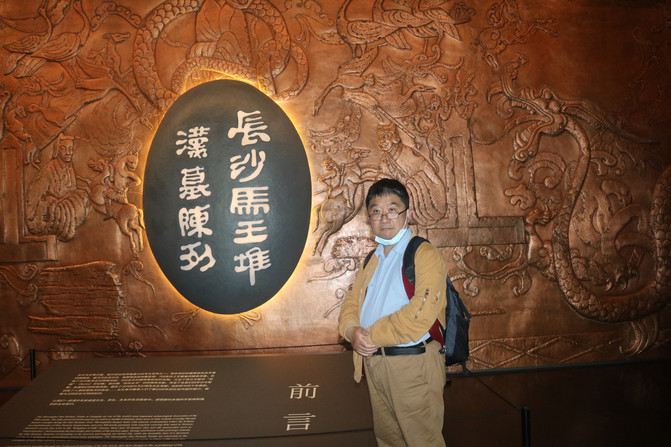
From the unearthed seals, we know the identity of the owner of the tomb-it was the family cemetery of Licang, Prime Minister of Changsha State and Marquis of Qi in the early Western Han Dynasty.


For more than 2,000 years, all the daily utensils in my home have been lacquerware



Snacks, red bayberry, sweet melon seeds

siluo

silk book
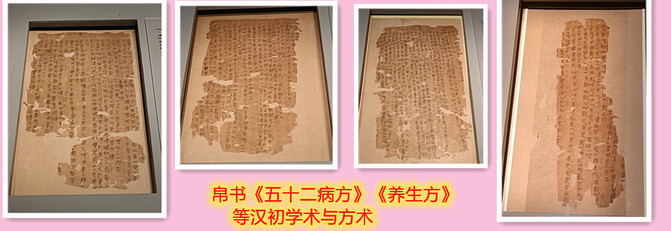

Silk socks and shoes


"Zen Yi Su Yarn" is one of the earliest, lightest and thinnest clothing treasures to date, and is a well-known cultural relic.


Burial flag




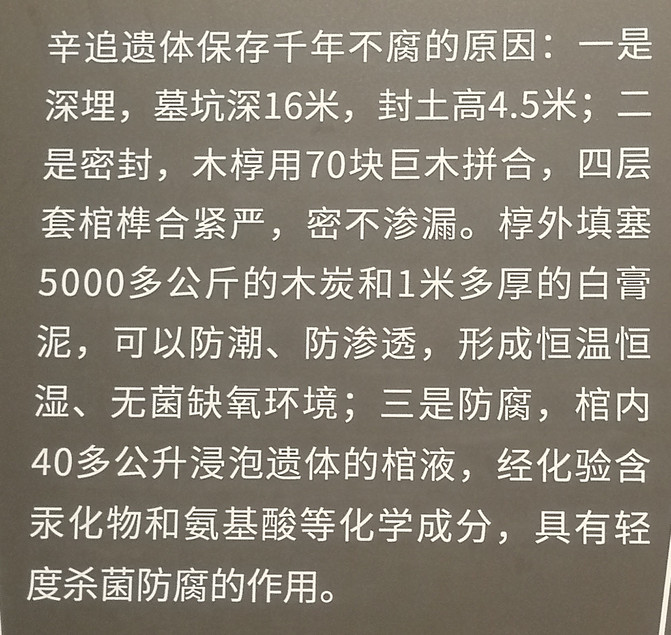
I believe that when you go to the museum, you will also be praised by the superb skills of your ancestors more than 2,000 years ago.
Tianxin Pavilion-one of the top ten famous historical and cultural buildings in China. I believe you are no stranger. China has a long history and profound cultural heritage. Many famous pavilions, Tengwang Pavilion, have been left behind since ancient times (Nanchang City), Yueyang Tower (Yueyang City), Yellow Crane Tower (Wuhan City), Guanque Tower (Yongji City, Shanxi), Penglai Pavilion (Penglai City, Shandong), Daguanlou (Kunming City), Yuejiang Tower (Nanjing City), Tianxin Pavilion (Changsha City), Bell and Drum Tower (Xi'an City), Ten famous Chinese historical and cultural buildings such as Tianyi Pavilion (Ningbo City) have become treasures of Chinese culture.
Tianxin Pavilion is a tower in the ancient city of Changsha. It was built under the supervision of Yang Xizu of the Fujun Army in the 11th year of Qianlong (1746). It has been restored after several wars. It is now the only remaining object of the ancient city of Changsha and the only remaining symbol of the ancient city in Changsha.

When you enter the door, you will see


The tower is 6 or 6 meters high and has a general stone structure. The tower base is hexagonal. The tower body is composed of a disk and a cylinder. There is a round ball on the top of the cylinder, which symbolizes the earth. The spherical surface is engraved with a map of China. A stone lion stands tall above the ball. The stone lion looks far away with its bright eyes, implying the sacred and inviolable national integrity of Chinese territory.

An archway in Tianxin Pavilion Scenic Area was built in 1946; to commemorate the soldiers killed in the three anti-Japanese battles in Changsha, it is made of general anesthesia stone.

The Chonglie Pavilion was built in the late Qing Dynasty and early Ming Dynasty. In 1929, it was changed to the National Humiliation Memorial Pavilion to commemorate the May 3rd Massacre.

It is an ancient building that embodies the architectural style of the Han people in the Ming Dynasty. During the Hongwu period of the Ming Dynasty (1368 - 1398), Qiu Guang, the commander of the Changsha garrison, built the Changsha city wall. All the earth city walls built in the Yuan Dynasty were replaced with stone-based bricks. Today, only the ancient Tianxinge city wall is 251 meters long, and the rest has been demolished.










The batteries and cannons on the wall of Tianxin Pavilion


Tianxin Pavilion Ancient City Wall
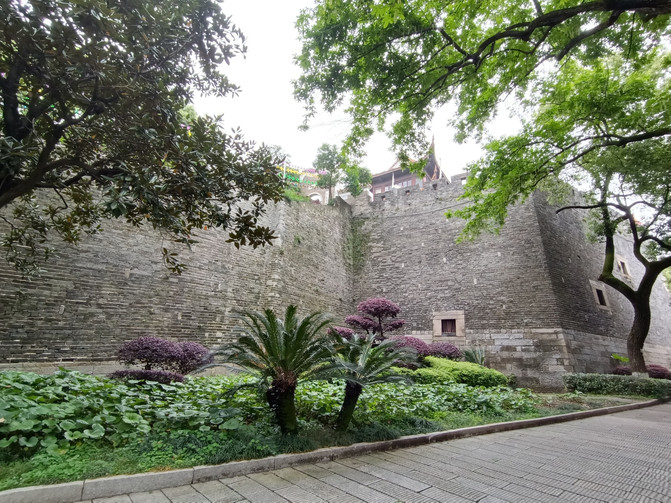
Get out of Tianxin Pavilion Scenic Area from here

Two more cups of tea will look beautiful, you know the taste.

4-22 Huangxing Pedestrian Street, Zhongshan Pavilion, Chuanshan Society
"Old Changsha" series of bronze sculpture
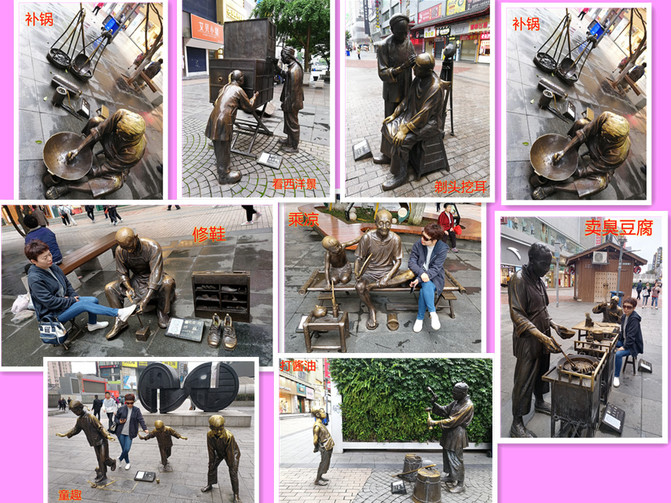
Zhongshan Pavilion-It was built in July 1930 in memory of Dr. Sun Yat-sen. The Bell Tower is a Gothic building and has been in existence for more than 90 years. It has witnessed the great changes in Changsha and was also the beginning of Changsha's use of public standard clocks.




Chuanshan Society-the former site of Hunan Self-Study University. The earliest site was Zeng Guofan's Temple. It was built in 1875 and was originally the "Sixian Lecture House." In the third year of the Republic of China (1914), Liu Weilu (Ren Xi), a native of Liuyang, united with social progressives to establish the "Chuanshan Society" here to study the academic thoughts of Wang Chuanshan, a great thinker in the late Ming and early Qing Dynasties. It was a single-storey courtyard house with three entrances. In 1921, Mao Zedong and He Shuheng founded a self-study university here.


I went back to my place of residence at noon to pack my luggage and go home. The four-day trip was still full of rewards.
Previous Article:People from Guangdong go to Changsha for a weekend trip out of the province!
Next Article:Hunan Tourism: Changsha Yuelu Academy and Du Fujiang Pavilion (Photo)
